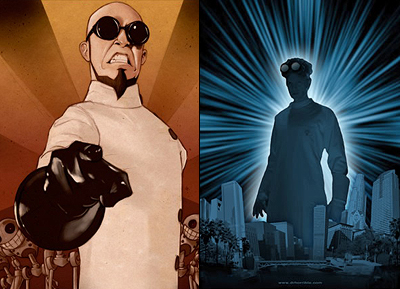Companies spend billions of dollars each year trying to to create a positive image for their brand. Alas, there are times when no matter how many fancy campaigns you run, no matter how many experts you consult, a certain image is burned into the public’s mind forever. A new site called Brand Tags tries to distill that image for all to see.
Brand Tags is “a collective experiment in brand perception,” and it works like this: the site loads, a brand shows up, and you’re asked to type one word – the first word that comes to mind when you see the logo. The result is compiled with the rest of the answers and appears in a “tag cloud.” The more frequently a word gets typed by different people, the larger it appears, to some interesting effect. For example, here’s a slice of the tag cloud for Adobe:

As you can see above, opinion is divided. Many people tagged Adobe as “expensive” and “bloatware,” but overall the response indicated that people find Adobe’s products useful, although many wish there were alternatives. Here’s an example of a brand that received very little love on the site, Taco Bell:

Most of the results are hilarious, scathing and true. When I clicked on the tag cloud for MTV, one of the largest tags was “no music,” the rest of the tag cloud peppered with comments such as “outdated” and “obsolete.” One of the biggest tags on Pabst was “hipster,” in close proximity of “redneck.” Continental Airlines is jammed with tags like “crash,” “bad service” and “delays,” while Virgin Atlantic enjoys an overall positive response with tags like “fun,” “trendy” and “sex.” Calvin Klein’s black-and-white Kate Moss campaign from the 90s remains so strong in people’s minds that more tags reference it than any advertising they’ve done since. The American Apparel tag cloud includes the word “pedophile.” Google’s dominating positive perception has a dark undertow; along with a higher-than-usual amount of positive tags such as “useful,” “smart,” “awesome,” “everything” and even “god,” the large tags “big brother” and “world domination” appear ominously in the cloud. Boing Boing enjoys a very positive response; the largest negative tags read “what,” “huh” and “no idea.”
Similar studies of public brand perception have surfaced before, but never in such an elegant, accessible form. Seeing the cold, hard truth can touch a nerve, causing some advertisers to spend billions on attempts to improve their image. In 2003, McDonald’s almost sued Merriam-Webster for including the word McJob in the dictionary (a McJob is defined as “a low-paying job that requires little skill and provides little opportunity for advancement”). Merriam-Webster’s basic response was “hey, The People are using the word, we’re just cataloging it.” McDonald’s opted not to sue, but instead launched a now-forgotten campaign called McProspects. When learning of the campaign, author Douglas Coupland, who first coined the term McJob in his novel Generation X in 1991, penned a funny response. Did the campaign make any difference? Well, the McDonald’s tag cloud contains no references to McJobs. There are, however, plenty of references to obesity, grease, Super Size Me and McDeath.
To the site’s author, Noah Brier: thank you from the advertising industry for doing millions worth of market research for free. To advertisers: please don’t try to corrupt the site by adding tags that make your brand look more positive. Microsoft, don’t add “crashes” to the Firefox cloud. Greyhound, don’t add “smells nice” to your tag cloud. Who do you think you’re fooling? Coilhouse readers: Enjoy it this site while it lasts, because the advice above will surely be ignored.
via Ilovetypography.com















